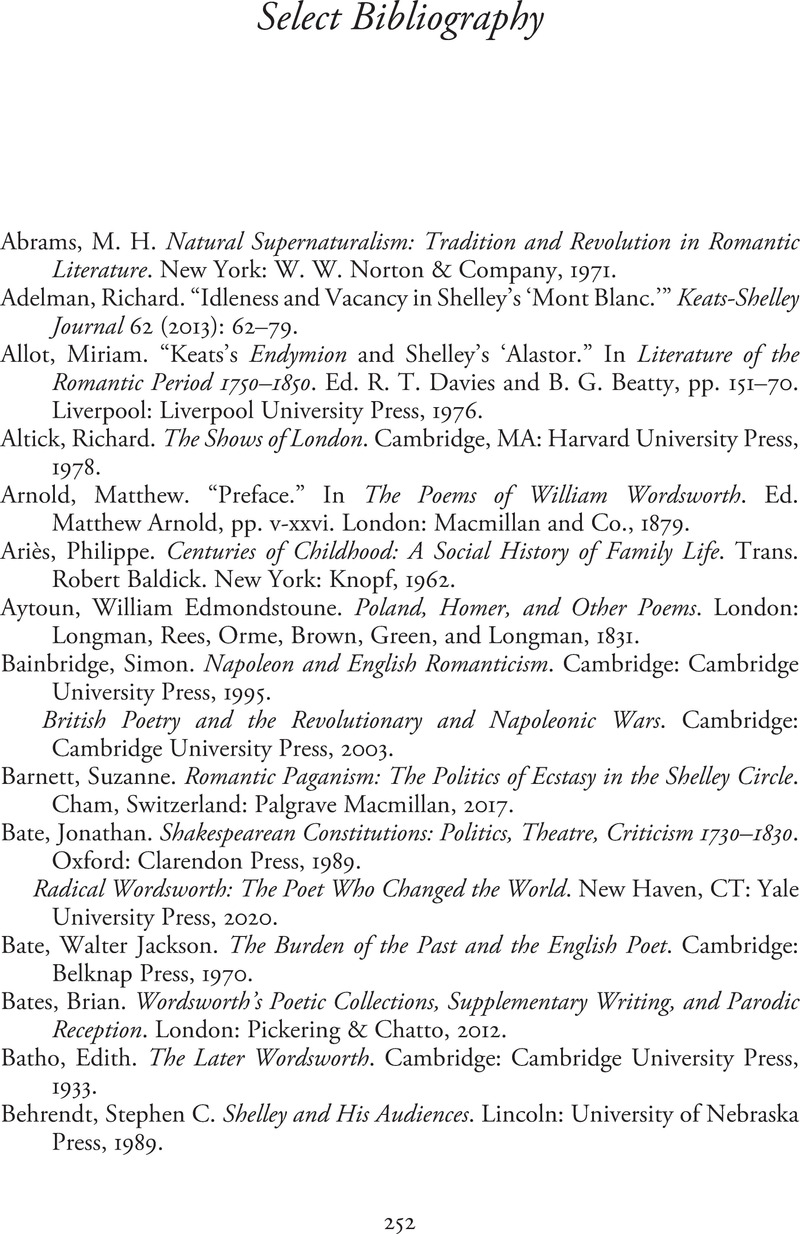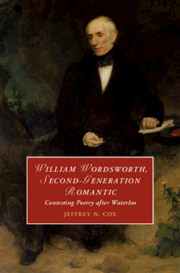Book contents
- William Wordsworth, Second-Generation Romantic
- Cambridge Studies in Romanticism
- William Wordsworth, Second-Generation Romantic
- Copyright page
- Dedication
- Contents
- Figures
- Acknowledgments
- Abbreviations
- Introduction
- Chapter 1 Cockney Excursions
- Chapter 2 Wordsworth’s “Thanksgiving Ode”
- Chapter 3 “This Potter-Don-Juan”
- Chapter 4 Thinking Rivers
- Chapter 5 Late “Late Wordsworth”
- Postscript Wordsworth in 1850
- Notes
- Select Bibliography
- Index
- Cambridge Studies in Romanticism
- References
Select Bibliography
Published online by Cambridge University Press: 10 June 2021
- William Wordsworth, Second-Generation Romantic
- Cambridge Studies in Romanticism
- William Wordsworth, Second-Generation Romantic
- Copyright page
- Dedication
- Contents
- Figures
- Acknowledgments
- Abbreviations
- Introduction
- Chapter 1 Cockney Excursions
- Chapter 2 Wordsworth’s “Thanksgiving Ode”
- Chapter 3 “This Potter-Don-Juan”
- Chapter 4 Thinking Rivers
- Chapter 5 Late “Late Wordsworth”
- Postscript Wordsworth in 1850
- Notes
- Select Bibliography
- Index
- Cambridge Studies in Romanticism
- References
Summary

- Type
- Chapter
- Information
- William Wordsworth, Second-Generation RomanticContesting Poetry after Waterloo, pp. 252 - 263Publisher: Cambridge University PressPrint publication year: 2021



